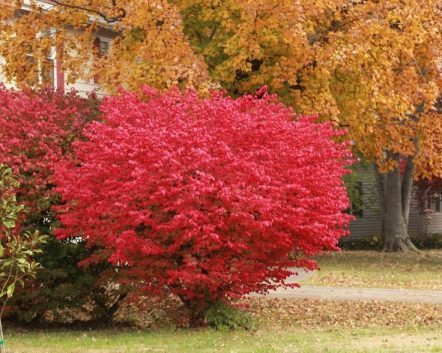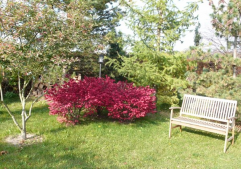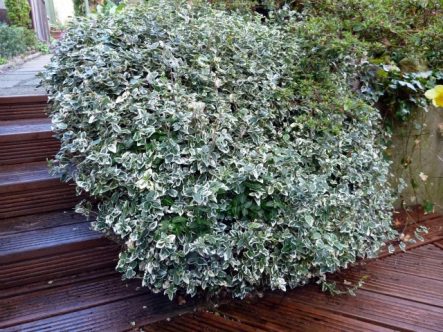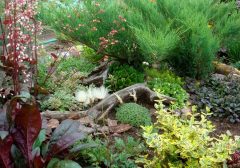An elegant shrub from the genus of low evergreen or deciduous woody plants, belongs to the Bereskletov family and is very much appreciated for its voluminous openwork crown. The spindle tree, planting and care of which does not require much effort and time from the gardener, is one of the most striking and beautiful representatives of valleys, floodplains of rivers and undergrowths of mixed forests of the Northern Hemisphere.
Material Content:
Types and varieties of euonymus
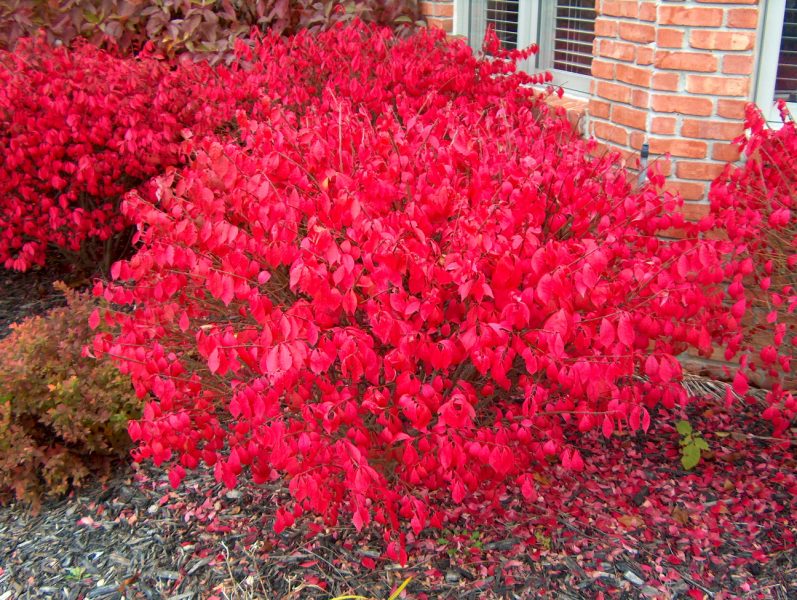
The genus has more than 200 species that are found in the wild in Europe, Asia, Australia and America in the form of shrubs and trees. The peak of decorative culture falls on the autumn period, when red, yellow, white, violet colors of leaf plates and bright ripened fruit-boxes expressively contrast with the general wilting of nature.
Euonymus winged compactus
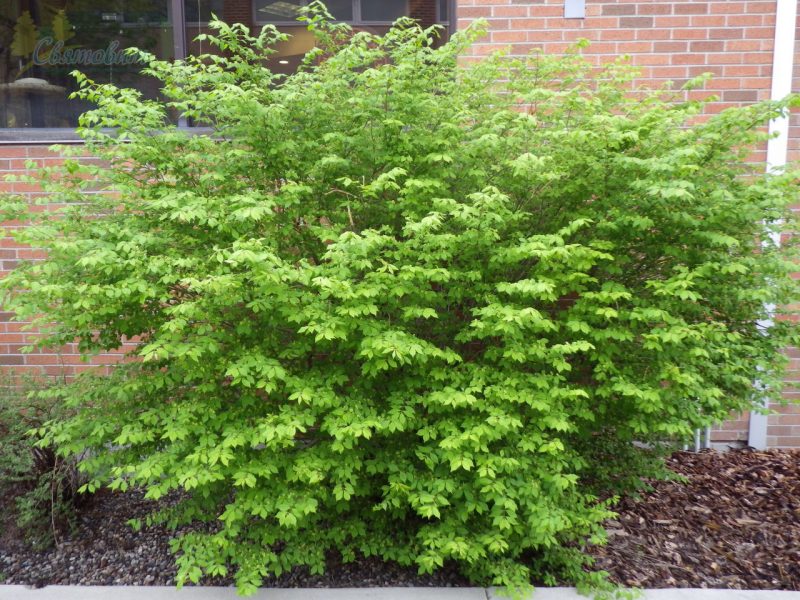
The deciduous inhabitant of the Far East, whose height does not exceed 2 m, is able to grow in the shade. Rounded shoots are covered with faces that appeared as a result of longitudinal growths. In the autumn, the fruits ripen, turning into a burgundy box, and the foliage acquires an intense red color.
European euonymus
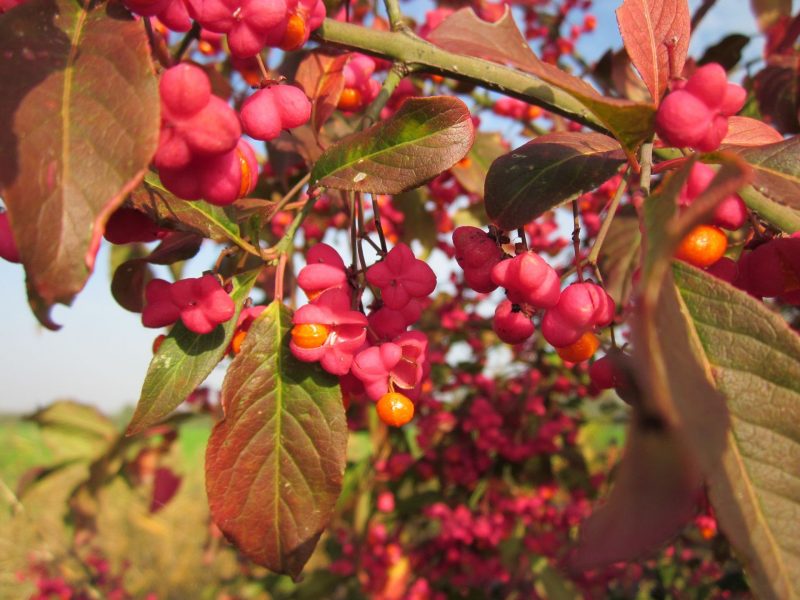
Species native to Spain, reaching 7 m in height, is a drought-resistant culture that can easily withstand temperatures as low as -15 ° C. Shoots with cork growths that look like tetrahedral branches are covered with flowers in late spring and early summer.When the fruits ripen with the advent of autumn, turning into pink boxes with white, red or black seeds, the European euonymus looks the most decorative.
Fortune euonymus
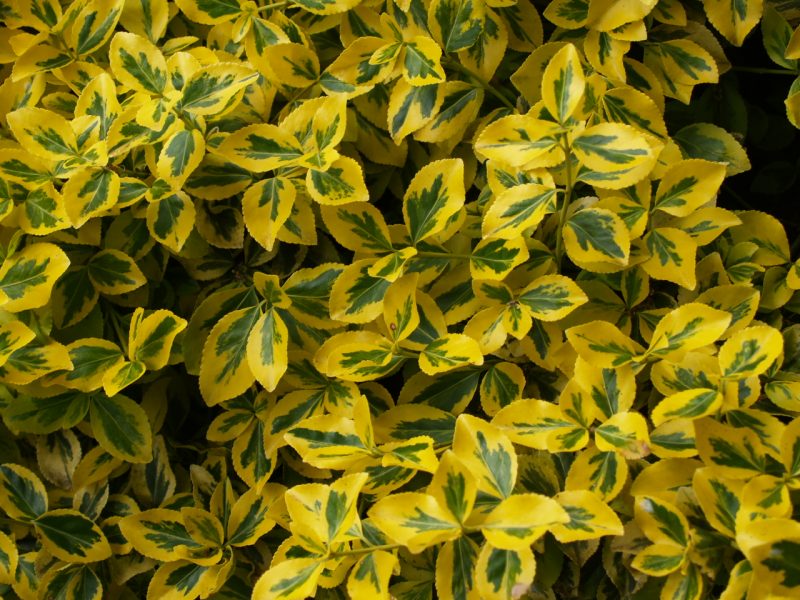
An evergreen native of China, obliged by the name of an Englishman named Fortune, who brought a view to Europe. Frost-resistant creeping representative of Asia, not exceeding half a meter, has dark green leaves with a light border. Fruits are not particularly effective in comparison with tall varieties. In temperate latitudes, the species pleases with flowering and fruits quite rarely.
Euonymus warty
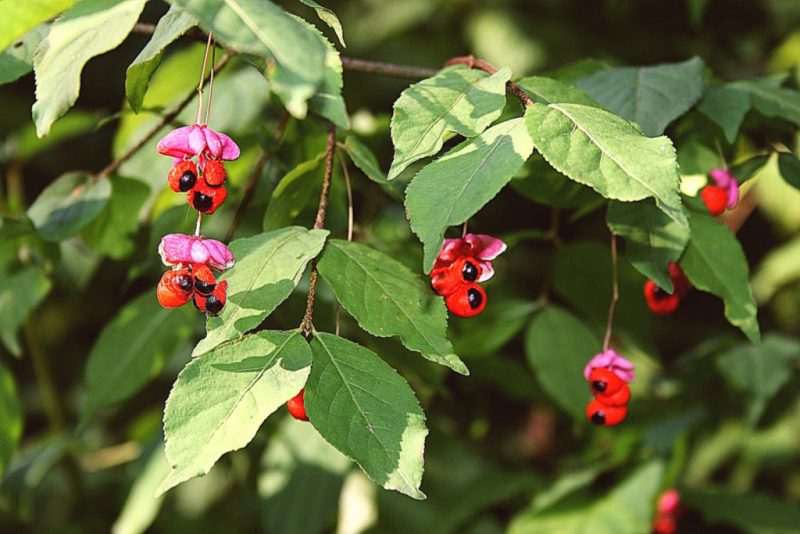
Deciduous variety, widely distributed in the mountainous regions of Russia, Ukraine and other countries of southeastern Europe. The main parameters include, such as frost resistance, undemanding, slow growth and high decorativeness. One and a half meter bushes consist of shoots having thickenings that resemble warts.
Japanese euonymus
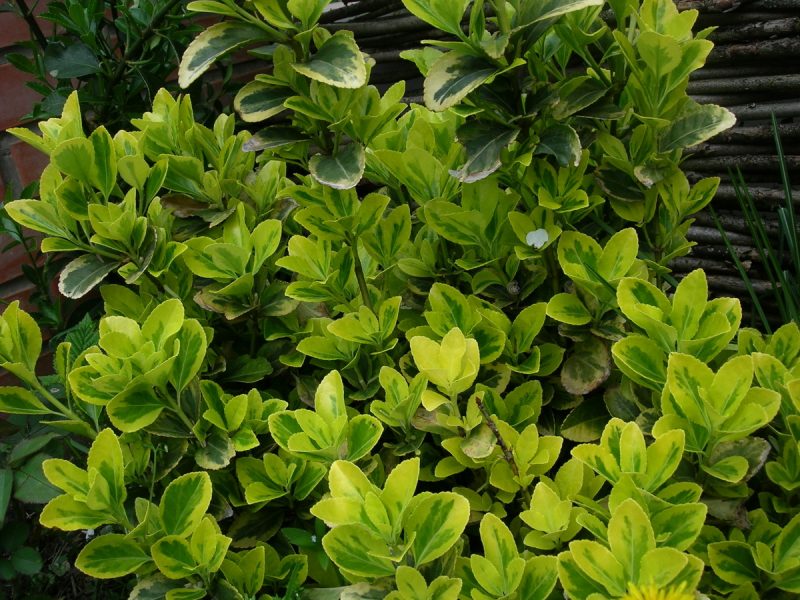
A species from Japan that needs heat is not able to withstand temperatures below 5 ° C. A culture with glossy plain green or variegated leaves is well adapted for cultivation at home or greenhouses, reaching no more than half a meter. In the natural environment, the Japanese species can grow in the form of creepers, reaching 7 m in length.
Planting a plant
The planting of euonymus seedlings is similar to the planting of other tree and shrub species, but it has its own subtleties.
Location and soil requirements
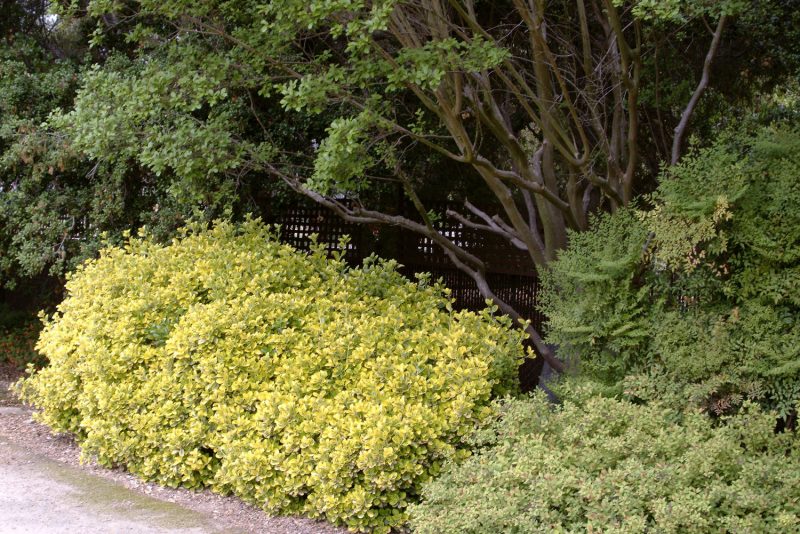
When selecting a site for planting crops, the following parameters are taken into account:
- Soil acidity - a shrub prefers slightly alkaline soil with a sufficient layer of humus. With increased acidity, the soil is preliminarily calcified.
- Groundwater level - euonymus negatively reacts to water stagnation and waterlogging.
- Lighting - the plant loves light partial shade, however, for variegated species, preference is given to well-lit areas.
- Space - depending on the variety, the shrub grows well not only in width, but also in height, so a site is selected at a sufficient distance from buildings, hedges and other plants.
How and when to plant?
The optimal time for planting shrubs occur at the beginning of spring, but the first half of autumn is considered acceptable time.
When carrying out planting operations, the following procedure should be followed:
- At the selected site no later than two weeks before planting, a landing pit is excavated, the size of which is one and a half times the size of the seedling rhizome.
- Sand drainage with broken brick or expanded clay is placed at the bottom of the pit, after which it is sprinkled with a small amount of soil mix from soil and compost.
- Then a sapling is placed with a spread rhizome and is covered with a substrate so that the root neck is at ground level.
- Soil in the near-stem zone is compacted and watered abundantly.
- After drying, the area around the trunk is mulched with peat or sawdust, which helps prevent excessive evaporation of moisture and reduce the time for weeding.
Advice! If the soil is acidic and not previously known, then 200 g of slaked lime should be added to each well.
Euonymus care
Despite the fact that the shrub belongs to unpretentious crops, it requires systematic care and care of the owner.
Watering plants and cultivating
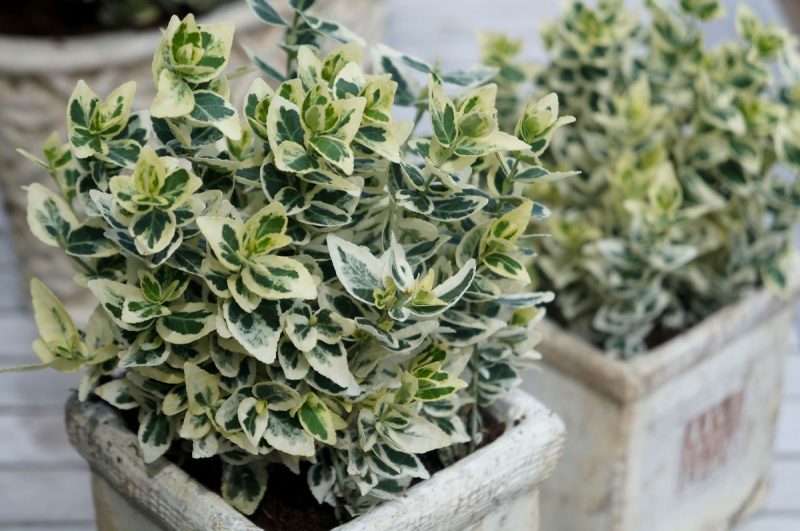
Humidification should be moderate and should be done as needed. In rainy years, additional watering can generally be excluded: an excess of moisture is harmful to the root system of the plant. Soil in the near-stem circle loosens at least three times during the growing season.
Top dressing
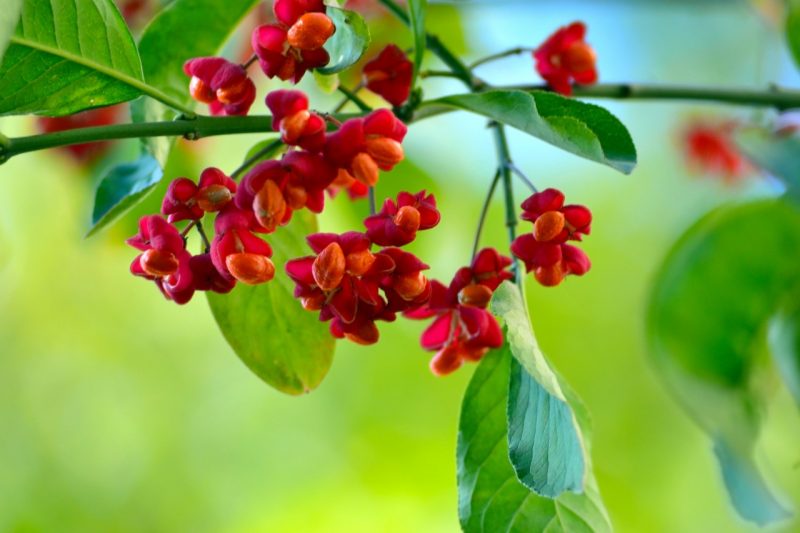
The plant will appreciate additional nutrition in the form of complex mineral fertilizers. Euonymus is fed twice during the growing season: in spring, nitrogen-containing fertilizers are applied, in the fall - phosphorus and potassium.
Pruning
Haircut stimulates branching of the euonymus. The optimal time for performing shaping pruning, due to which a conical or ellipsoidal crown is created, is early spring or autumn after fruiting, since the fruits are one of the most important decorations of many types of euonymus. During the growing season, it is allowed to use the removal of weak or damaged shoots, as well as pinching.
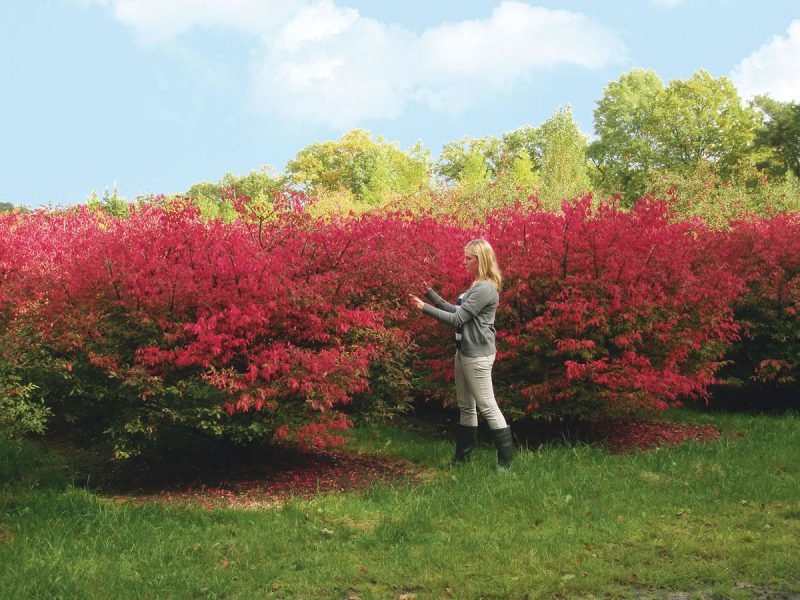
Care in the fall, wintering
While the specimens are young, with the advent of the first frosts, the culture takes shelter for the winter with spruce branches or fallen leaves. However, as they grow older, frost-resistant varieties growing in open ground no longer need additional protection from frost.
Plant protection against diseases and pests

Among the main pests, the damage of which is noted on the leaf plates of the euonymus, aphids, mealybugs, and spider mites stand out. To combat harmful insects, two-stage treatments with the insecticidal preparations Actellik, Aktara, Confidor are used with an interval of 7-10 days, depending on the toxicity of the agent. When examining the culture, manifestations of fungal diseases - powdery mildew and rot of the trunk can also be detected. The latter refers to intractable diseases, so the plant needs preventive measures in spring and autumn when using Bordeaux fluid or another copper-containing drug. In case of powdery mildew, the euonymus is sprayed with fungicide at least three times with an interval of a week.
Spindle-tree breeding

The culture propagates by generative and vegetative methods, the first of which is not used for breeding variegated and species with colored leaf plates due to the inability to maintain the varietal qualities of the maternal specimen. Among vegetative methods, euonymus is bred by layering, dividing the bush and cuttings.
Using layering
With the advent of spring, the shoots of the maternal specimen are bent, placed in previously dug grooves and buried, while the upper parts remain on the surface. After the formation of the roots, the shoots are separated and planted in a permanent place.
Bush division
A convenient way to propagate dwarf varieties, in which:
- A shovel carefully cuts off part of the rhizome of the maternal specimen with the root shoot.
- Shoots are cut to ⅔ length, after which a new seedling is planted at a constant place of growth.
Cuttings
Cuttings 7 cm long with one internode are prepared in the first half of summer from the upper parts of semi-lignified shoots of specimens older than 5 years. Slices with processed slices are placed in a substrate of peat and sand and covered with a film. 2 months after the formation of the root system, the cuttings are planted in open ground for growing.
The main problems when growing
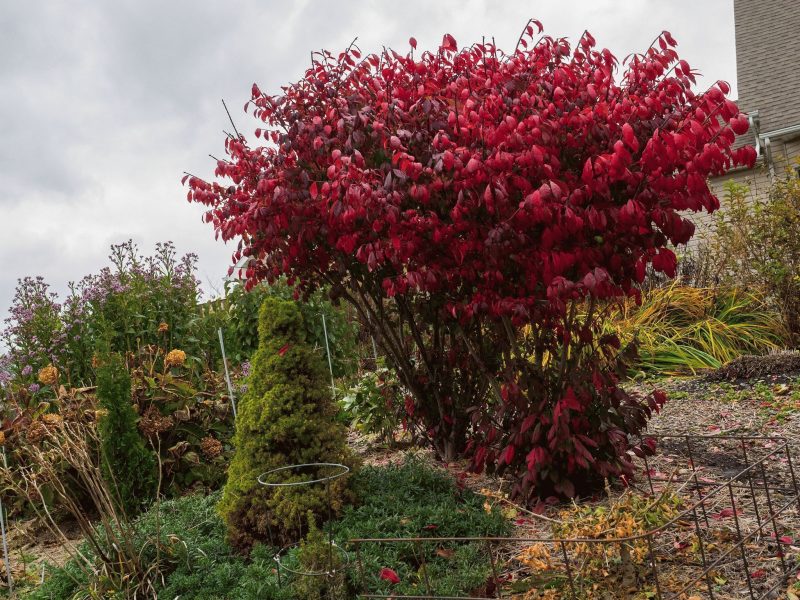
If all agrotechnical requirements for growing crops are fully respected, gardeners, as a rule, do not face the following difficulties:
- yellowing and falling of leaves due to excess moisture;
- twisting of leaf plates due to pest infestation;
- loss of color by variegated varieties due to an overabundance of nitrogen-containing fertilizers.
Shrub decorative application
The euonymus is widely used both in landscape design and for landscaping:
- Tall tree-like varieties are used in single plantings for landscaping city parks, squares and courtyards of various municipalities.
- Low-growing shrubs are used to create a chic fast-growing hedge.
- Dwarf specimens are often grown in tubs as an indoor euonymus.
- Evergreen creeping species are used as groundcover and ampelous plants, found on alpine hills, rockeries and garden borders.
Thus, the undemanding euonymus with a wide species diversity is a diverse culture with high decorative qualities.


